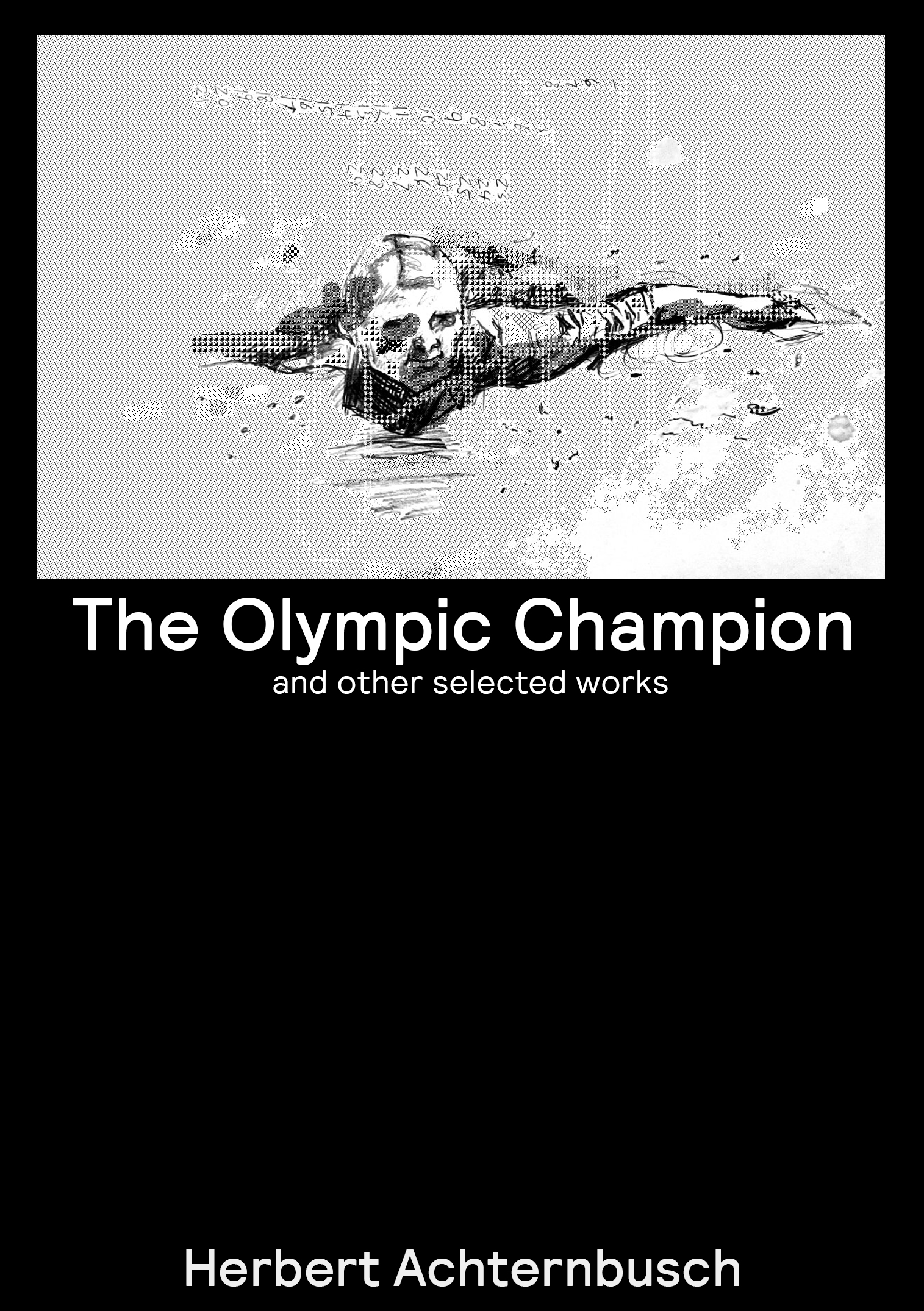
| Editions Cox | About | Contact |
|---|

Herbert Achternbusch (1938-2022) is best known for his films, with their low budget DIY production style; their comically subversive, anarchic approaches to various themes and subject matters (rather in that way which is now said to be the right of stand-up comedy); their largely untrained regular cast comprised of friends, daughters, bar regulars, and Achternbusch himself usually in the lead role; and their settings split between Achternbusch’s native Bavaria and motifs from remote destinations, which most of the budget often seems to have been consumed filming – whether it’s icebergs in Greenland, the volcanic island Stromboli, ancient ruins in Greece, elephants and giant Buddha statues in Sri Lanka, or transport trucks in the United States.
But before Achternbusch was a filmmaker, he was a writer. The films themselves stem largely from his prolific output as a writer. He didn’t write film scripts solely for making movies, but “film books” also meant for publication, sometimes well before any movie was made. The film books can often be traced to earlier published writings, considerably reworked. Achternbusch not only wrote prolifically but also freely published works in different forms and phases of completion. Every so often he would collect all the writings he’d done over a period of time – novels, stories, plays, film books, letters, journal entries, and whatever else – and have them published as a book. But, sadly, until now nothing has been published in English translation. Perhaps the only legitimate means of access to his work in English is the one film with a subtitled DVD version, “Heilt Hitler!” (“Heal Hitler!”).
This volume brings together translations of four film books and two plays first published between the years 1979 and 1983. The film books tend to operate in the mode of dialogue in concert with pointed descriptions of scenes, gestures, and actions (Achternbusch also had a penchant for physical comedy); the plays tend toward the more intimate mode of monologue framed by stripped-down, largely expressive or symbolic settings. Both forms remain experimental and exploratory, their narrative threads always shifting from beginning to end. They present stylistically, tonally distinct iterations of two of Achternbusch’s major gifts as a storyteller: that of constructing an engaging, coherent narrative around wildly absurd premises, and that of developing a broad range of thoughts and emotions without ever breaking the comic mold which energizes the whole and binds it together like a special kind of glue.